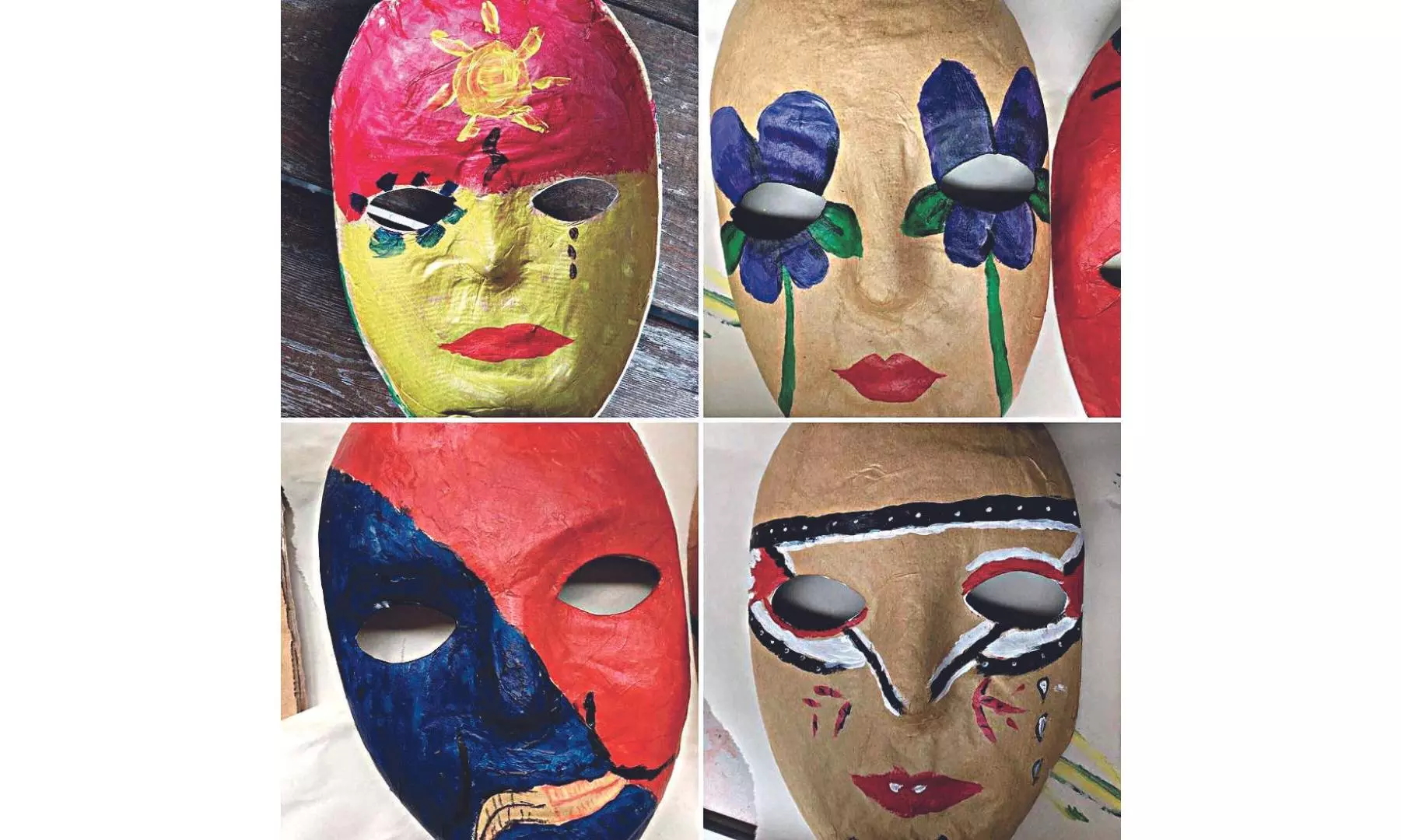Masked Healer
Masks have been an integral part of various cultures and performing art forms, but its therapeutic value is being unmasked via mask therapy

Many times, individuals wear a mask or ‘mukhota’ to hide their true emotions and feelings for reasons like insecurity, fear, self-doubt etc. An expressive form of therapy, art therapy uses creative mediums to improve mental well-being whether it is painting, clay-moulding, pottery, mandala art, or dancing. Among its various techniques, mask therapy emerges as a profound and transformative method, blending cultural richness with psychological healing. Anya Reddy, a play therapist and founder of Play Therapy with Anya says, “Masks act as externalised projections of inner thoughts, feelings, and experiences. Unlike traditional talk therapy, mask therapy allows individuals to access and express deeper emotions and aspects of themselves that may be difficult to articulate verbally.” It utilises the creative process of mask-making as a means of self-exploration and self-expression. At times, even the process of making a mask itself becomes therapeutic, providing a focused and contained space for exploration.
Prompts for Self-Reflection
In the realm of art therapy, mask-making serves as a dynamic tool for self-exploration and therapeutic intervention. The mask therapy process differs with each therapist. Techniques vary depending on the therapist’s approach and client’s needs, ranging from sculpting to collage. Sometimes, masks are created from scratch or given to them as per the condition of the therapy session. In the therapeutic process, individuals choose or discuss themes for their masks. Some are prompted with ideas like decorating the outside of the mask to represent how they think others see them or the inside of the mask to show how they see themselves. Prompts may include questions or exercises to help individuals explore and reflect upon their emotions, identities, or experiences, but the exact prompts can vary based on the goals of the therapy and the client’s needs.
The participants use various materials such as clay, paper-mâché, paper, markers, paints, feathers, fabrics, and more to express themselves freely.
The therapist guides reflection on emotions and experiences during mask creation, leading to discussions on symbolism afterward. People integrate insights gained into their lives, fostering self-awareness and empowerment. This reflective journey promotes emotional catharsis and personal transformation.
Unwanted Pressure
Often people are conscious of what they do or exhibit and how others perceive them. This leads them to be peculiar about always being ‘right.’ Ritu Dua, a visual artist and art therapist, often gets asked by clients, “I don’t even know how to sketch a line.” She says, “Art therapy is fairly new to India. Often people feel the pressure of being judged or self-inflicted pressure of being accurate. I comfort them by reminding them that there is no such thing as ‘mistake’ in this session. I tell them to draw their mind without any inhibitions.”
Self-exploration
By externalising internal experiences through the creation of masks, individuals gain clarity and insight into their emotions, conflicts, and self-perceptions. Through the act of creation and storytelling, participants reclaim a sense of agency over their narratives, fostering a greater sense of self-efficacy and empowerment.
“Masks provide a safe distance to explore difficult emotions and hidden aspects of oneself. Mask-making therapy helps individuals explore different aspects of themselves by providing a nonverbal and creative outlet for expression,” says Anya. Through the process of creation and self-reflection, individuals gain insights into their emotions, identities, and inner conflicts. The therapist asks open-ended questions to encourage individuals to reflect on their mask's meaning, facilitates group discussions, and their creative projections onto their respective masks. Individuals may delve into the associations, emotions, and memories evoked by the mask, and themes such as social roles, cultural influences, and personal experiences.
Therapeutic Goals
Like any other therapy, it also encourages increased self-awareness, emotional expression, and self-exploration, aiding in the processing of trauma, difficult emotions, and identity conflicts. Through this journey, personal growth is fostered, insights are gained, and coping skills are developed, ultimately empowering individuals to navigate life's challenges with resilience and strength.
Cultural Significance
The roots of mask therapy celebrate the simultaneity of Indian culture, ancient traditions, and rituals as well as the parallel existence of beliefs, myths, and ideas. Ritu explains, “Masks have been around since time immemorial, used for storytelling, dramatic enactment etc. It allows us to reconstruct the imaginative state into reality. Often people would wear masks to depict mythological characters like Ram or Ravan, or for character definition in storytelling or dramas.” From the elaborate masks of classical Indian dance forms like Kathakali and Theyyam to the sacred masks used in tribal rituals like the mask worn in Purulia Chhau dance (West Bengal), these artefacts embody stories, emotions, and archetypal characters. Through the creation and exploration of masks, individuals delve into their subconscious, unravelling layers of emotions and experiences that may otherwise remain concealed. As the field of art therapy continues to evolve, the ancient tradition of mask-making finds new resonance as a potent catalyst for personal and collective transformation.
Revival of Mask Making
Hem Chandra Goswami, a mask-making artist from Assam's Majuli district received the Padma Shri in 2023 for his contributions in reviving the ancient culture of mask-making. He is known for his expertise in decorating the Sattriya masks.
Masks act as externalised projections of inner thoughts, feelings, and experiences.” — Anya Reddy, play therapist & founder, Play Therapy with Anya
Often people feel the pressure of being judged or self-inflicted pressure of being accurate. I comfort them by reminding them that there is no such thing as ‘mistake’ in this session.” — Ritu Dua, visual artist & art therapist
